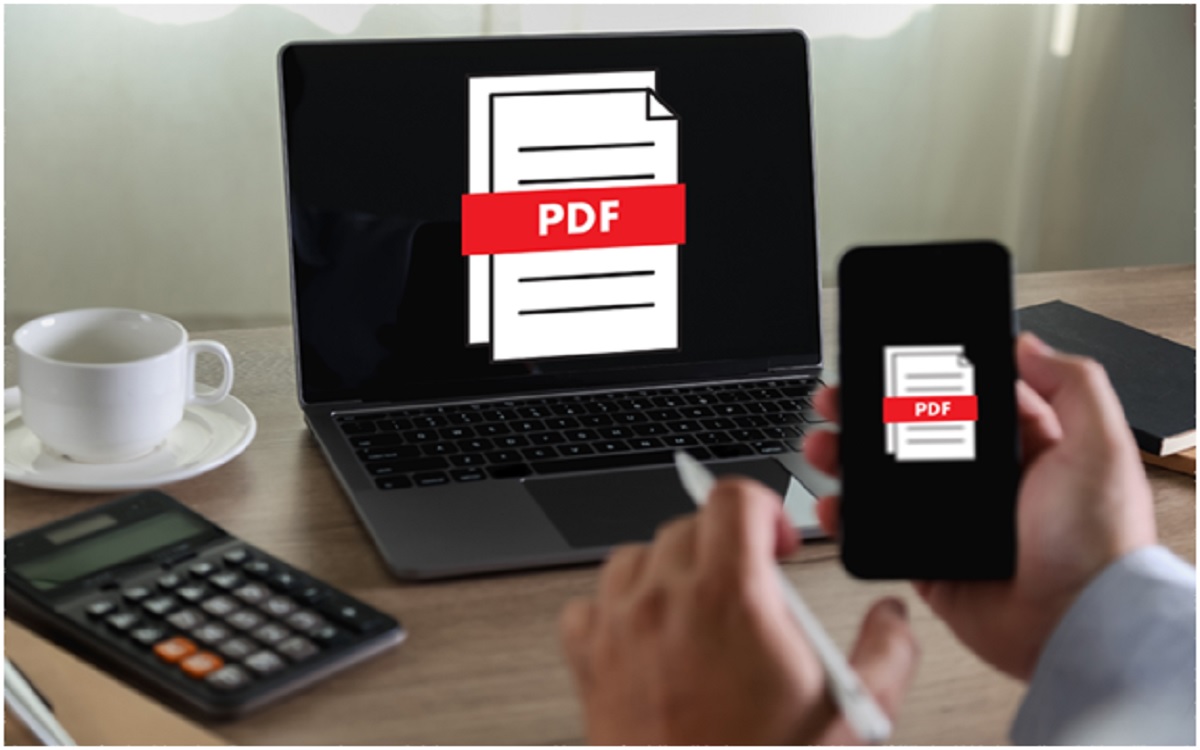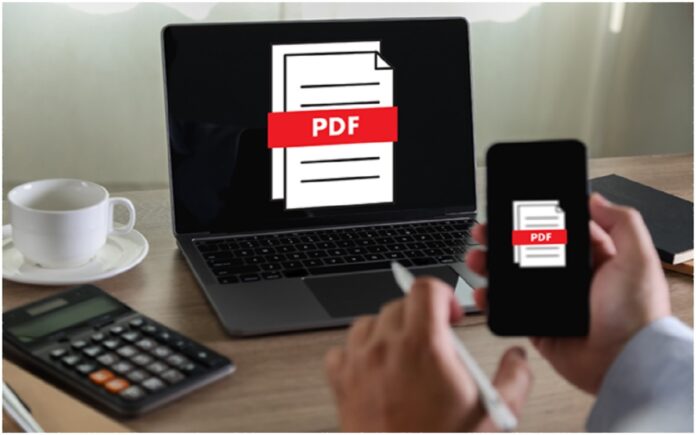Managing your digital documents resourcefully has become necessary in a world where every byte counts. Whether you’re a creative professional, a student, or a business owner, the struggle with hefty PDF files can be exhausting.
Recent Released: A STEP-BY-STEP GUIDE TO EPIC GAMES ACTIVATE: UNLEASHING THE POWER OF YOUR GAMING EXPERIENCE
Imagine being on the move, trying to share a crucial document, and facing a sudden file size issue. How frustrating! Large PDFs consume your storage and pose uploading, downloading, and sharing challenges. PDF resize is the key to breaking free from these digital fetters, opening doors to swift collaboration and effortless document management.

Let’s streamline your document experience and make sharing a more engaging task.
The Common Reasons Behind Large PDF Files
Let’s first understand what factors contribute to a document’s excessive file size. Recognising these specific reasons can help you effectively reduce the file size:
- High-Resolution Images: Including high-resolution images in a PDF can significantly inflate its file size.
- Layers and Overlapping Content: Documents with multiple layers or overlapping content may be more extensive.
- Document Overheads: The accumulative effects of past edits, particularly in a PDF with numerous modifications, can increase file size.
- Complex Vector Graphics: Vector graphics with intricate details and paths can contribute to an increased file size.
- Page Thumbnails: Storing page thumbnails in the document can add to its overall size.
- Embedded Fonts: A document with numerous embedded fonts, especially without subsetting, may result in a larger file size.
- Security Settings: Certain security and encryption settings might impact the file size.
- Redundant Information: The document might contain duplicate information or data you can trim.
Tricks for PDF Resize
- Explore PDF Splitting: Tailor your document sizes further by utilising the PDF splitter to create smaller, more manageable files. This step provides additional flexibility in optimising your document structure.
- Functional Test Drive: Conduct a thorough functionality test post-compression for documents with interactive features like forms or hyperlinks. Ensure these elements perform fluently, maintaining the document’s intended user experience.
- Secure Your Original: Prioritise the safety of your files by creating a backup of the original document before initiating the compression process. This precaution ensures you have a fail-safe in case of any unforeseen issues.
- Efficient Data Removal: Bid farewell to unnecessary data. The compression tool identifies and removes repetitive text and spaces, utilising unique patterns that take up minimal memory, resulting in a leaner file size.
- Download and Confirm: After compression, download your file and take a moment to confirm that every element, from content to images and fonts, is accurately delivered. Quality assurance is vital!
- Choose “Save As” over “Save” When compressing a PDF. Unlike “Save,” which appends changes to the original, choose “Save As”, which creates a new, optimised file.
Size Optimisation 101: The Software You Need for Quality PDF Resize
Here are some options to resize PDF online or through software that caters to your operating system:
For Windows
1. Adobe Acrobat
Uncomplicate your PDF experience —lighter, faster, and with total control for PDFs up to 5GB in size.
- Simply open your file in Adobe Acrobat.
- Choose ‘Tools’ and Accept the ‘PDF Optimiser.’
- Effortlessly reduce file size with a click on ‘Reduce File Size’ in the intuitive toolbar.
- Dive into ‘Advanced Optimisation’ for precise control over image quality, fonts, transparency, and more.
- Choose a location to save your compressed PDF file.
2. SmallPDF
To resize PDF online, Smallpdf is perfect for compressing up to two files daily. Simplify your PDF journey with a touch of magic with a 5GB max PDF file size.
- Visit SmallPDF’s site and click ‘Compress PDF.’
- Click on ‘Choose Files’.
- After upload, opt for ‘Basic Compression’ (free) or ‘Strong Compression’ (paid for smaller size, slight quality reduction).
- Select ‘Choose Option’ for Basic Compression.
- Download your reduced-size PDF from the follow-up screen.
- No sign-in is needed, and SmallPDF deletes your file for security after an hour.
3. DocuPub
DocuPub offers manual resizing and rescaling features, allowing you more control over the dimensions of your PDF file. Note that DocuPub has a file upload limit of 24 MB.
- Visit the website and select your PDF file.
- Adjust the resize settings to your preference, then click ‘Upload & Resize.’
- Download and save the optimised file on your computer.
For Macs
1. Preview
- Launch Preview on your Mac; open your PDF by Right-Clicking and choosing Open with > Preview if needed.
- Navigate to File > Export, and choose ‘Reduce File Size’ from the Quartz Filter drop-down.
- Save the compressed file locally.
2. Automator
Mac’s built-in Automator is a dynamic tool for task automation.
- Launch Automator and opt for “Workflow” to initiate the process.
- Incorporate your PDF file by dragging and dropping it into the workflow area.
- Dive into the actions library, find “PDFs,” and select “Compress PDF Images” to enhance efficiency.
- Tailor the compression settings to your preference, providing a personalised touch.
- Run the workflow.
For iPhones and iPads
iPhone users can compress PDF files directly on their devices, eliminating the need for online compressors using this option:
PDF Expert:
PDF Expert, a feature-rich PDF management app on iOS, offers reading, annotating, and editing capabilities.
- Open your PDF file in PDF Expert.
- Tap on the “…” (More) button and select “Reduce File Size.”
- Choose your preferred compression level and tap “Reduce.”
For Androids
Android users can conveniently compress PDF files using various apps like the following:
1. WPS Office
WPS Office, a versatile office suite with a PDF reader and editor, facilitates PDF compression directly on your Android device.
- Launch WPS Office and open the PDF file.
- Access “Tools” and choose “Compress.”
- Select your preferred compression level and save the file.
2. Adobe Acrobat Reader
You won’t find a direct tool to compress PDFs in Adobe Acrobat Reader for Android. However, you can create a smaller version of an edited PDF:
- Open your PDF in Adobe Acrobat Reader.
- Make a minor edit or add a comment.
- Save the file by selecting “Save a Copy,” and the app will generate a smaller-sized copy of the PDF for you.
Conclusion
Creating or sharing downloadable PDFs is prevalent among students, bloggers, entrepreneurs, and businesses. Opting for a clean, optimised, and compressed PDF simplifies online sharing and email distribution and ensures accessibility for those with slower internet connections.
Though only sometimes straightforward, reducing PDF file sizes is a swift process. Various methods exist to achieve this without compromising quality. Utilise your PDF editor’s compression feature during saving or leverage online tools designed for PDF compression. Alternatively, create a new, optimised file using “Save As” instead of “Save.”
Experts often recommend aiming for an ideal size of 1,024 KB or 1 MB for web-based PDFs. Alternatively, consider adhering to the maximum upload size of your chosen distribution platform.






![SIMS 4 Download Free For PC Full Version 2019 [UPDATED] SIMS 4 Download](https://www.geniustechie.com/wp-content/uploads/2019/03/SIMS-4-Download-100x70.jpg)


